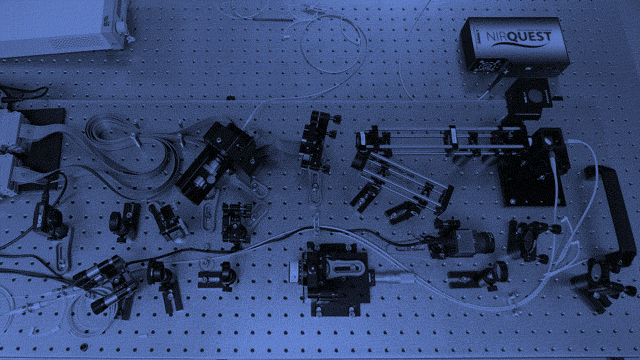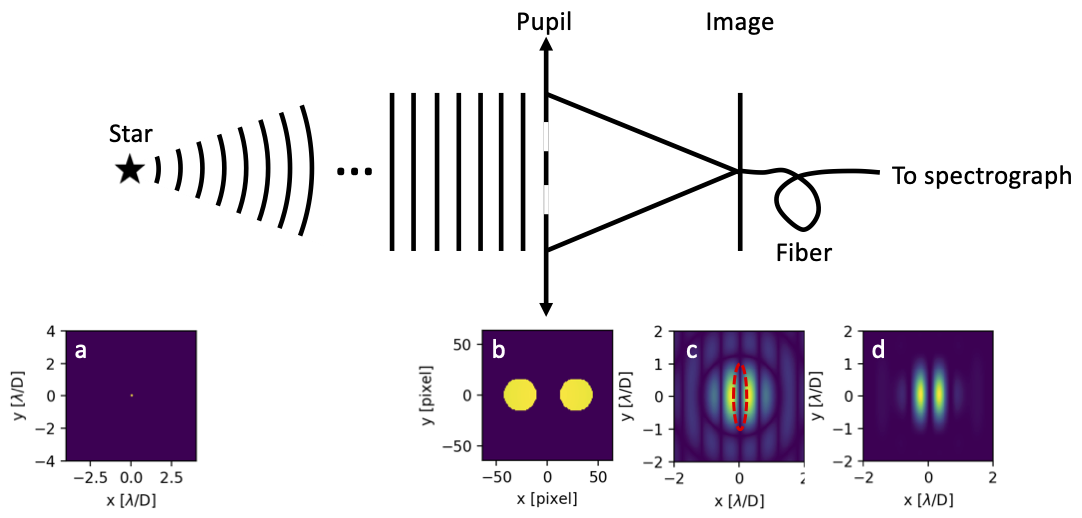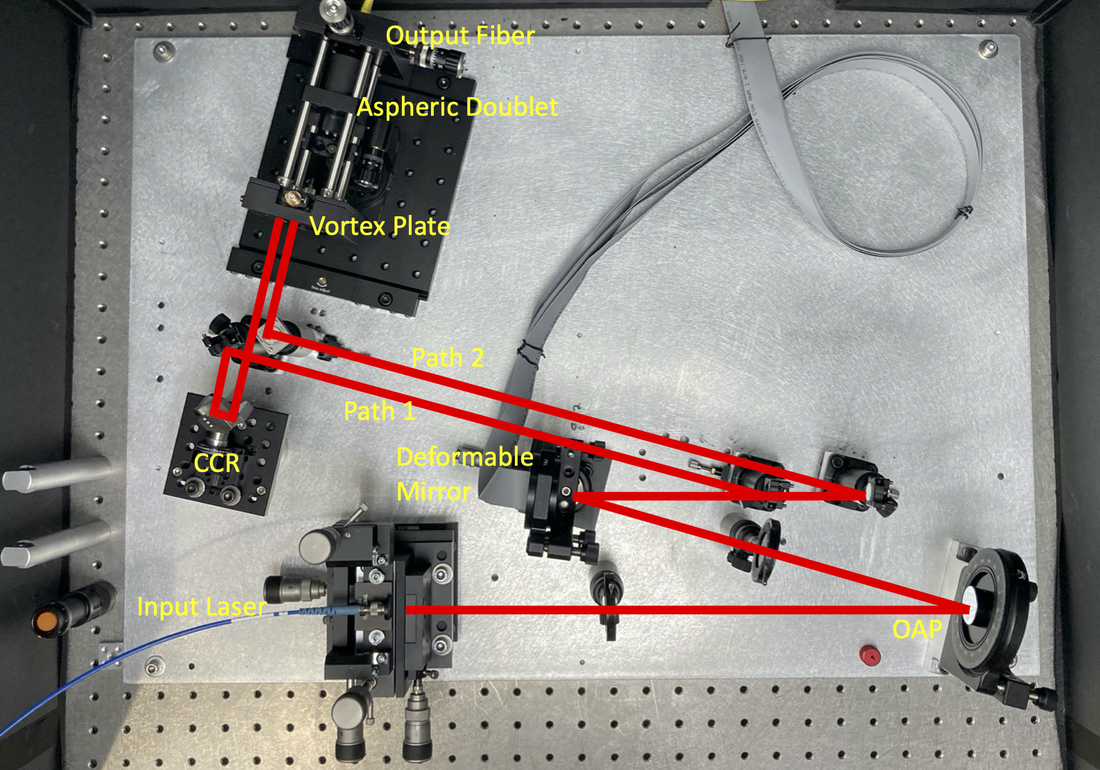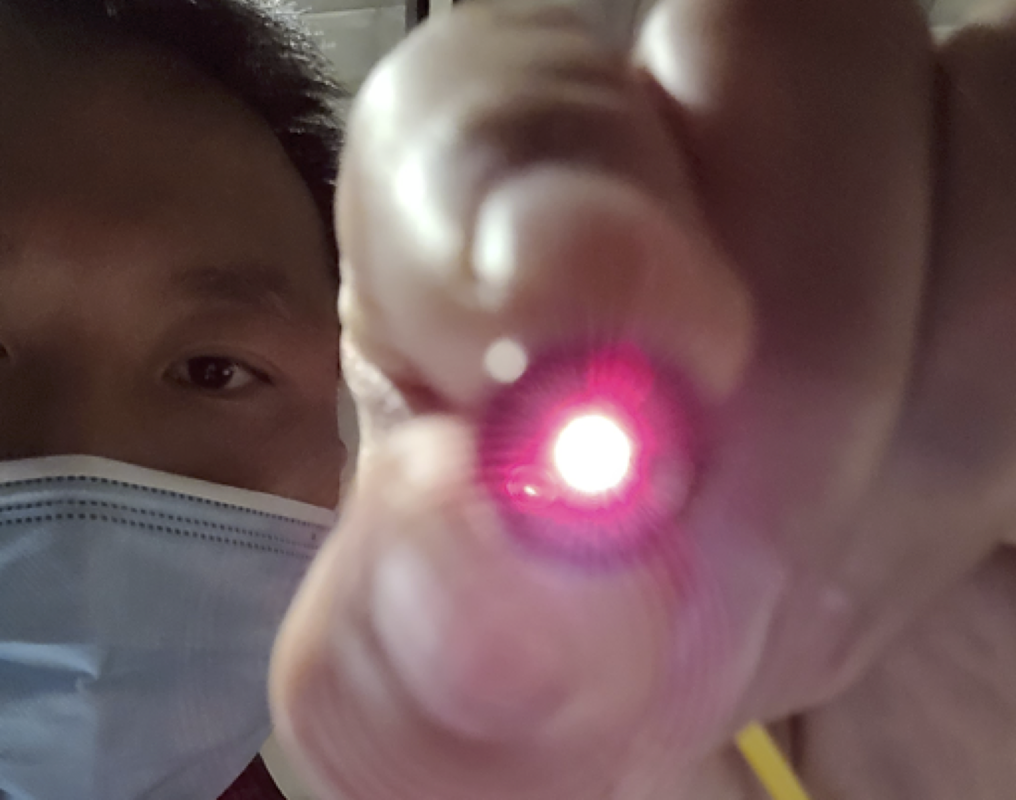In 2017, Dimitri Mawet and I published a series of papers (I and II) that lay the foundation for high dispersion coronagraphy (HDC), a technique that combines high contrast imaging and high resolution spectroscopy to detect biosignatures in Earth-like planets.
In 2018, Garreth Ruane and I developed the vortex fiber nuller (VFN) concept. The concept pushes HDC to sub-lambda/D regimes.
In 2020, Colby Jurgenson and I further advanced the fiber nuller concept, proposing the dual-aper fiber nuller concept. The concept can be applied to the large binocular telescopes and future giant segmented telescopes.
In April 2021, we have the first light into a single-mode fiber with the one-path setup. The coupling efficiency is 43%, about 2x lower than the theoretical maximum. The next steps would be adding pneumatic legs, stabilizing the fiber stage, and reducing optical aberrations. This is a huge milestone mainly thanks to Colby Jurgenson's many hours in the lab.




